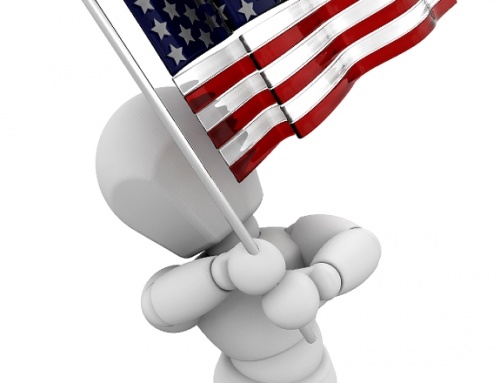Someone once said, “. . . it was lonely at the top . . .”, but the fact is it can be lonely anywhere in the organization.
Veterinary medicine is a lonely business for veterinarians. The doctor is always surrounded by people looking for an answer: staff, clients, and the community. The owner is afraid to talk to other practices, sometimes because of the FTC threats, often because they are perceived as competitors, but most often, because veterinarians believe they can do it themselves – ALWAYS! The need to ally with others is complex and multi-faceted. Most practitioners need at least one alliance to exchange information, one to accomplish major community or environmental issues, and one to relax. In the new millennium, the need for colleague-ism has never been greater, from increasing personal Association support, to the use of VIN computer linkages, to the need to refer cases to colleagues who have specialized equipment and/or training.
The isolation veterinarians make for themselves is a manifestation of our professional belief that we “must” perform. Every member of the veterinary healthcare delivery team has this dedication to performance. It does not matter if that dedication is present in an animal caretaker, a nurse technician, a client relations specialist (receptionist), a veterinarian, or a spouse. The drive to “be all we can be” often isolates each person from those who care or those who could help.
THE SPECTRUM
As a builder of practices, a consultant for those who want to be more than they were, I have seen the full spectrum of personal commitments. Sure, some people look for personal wealth at the expense of others, but most veterinarians I have met measure themselves and their practice against an inner yardstick of worth. There is a personal pride which most veterinarians possess; this is the driving force toward the search for excellence. The paraprofessionals within a practice are dedicated and, most often, underpaid, which reflects their true dedication to the profession, the clients, and the patients.
The challenge for a consultant is to find out what measurements (values) have been engraved onto the specific practice’s or veterinarian’s inner yardstick. The same “yardstick” problem exists within any community of veterinarians (with or without an Association). The fact is, in most every case the values and measurements are not engraved, they are not written, nor are they even espoused; they are like shifting sands, and everyone must guess what is expected. When there is never a “standard measure,” expectations cannot be exceeded.
FACT: People must be able to meet or exceed a standard measure of expectations to have pride in what they do.
Pride is essential in a service industry and critical in the healthcare profession; clients equate pride in performance with quality. It is their only measurement. The external pride in the veterinary profession is eroded by isolationism and competition; the fear of the diminishing dollar has reduced the search for an effective alliance, for an exchange of needs, and for assisting each other.
Consider the internal practice situation when the competency measure is developed by the staff as a response to some inaccurate consensus from a “they think” attitude. Not only is there a barrier to success, there is a significant breakdown of pride. It is very difficult for someone to work toward a nonexistent measurement; pride from success is kept from them. There is a very lonely feeling which comes with uncertainty. The same principle exists between practices and between colleagues. Do not respond to some inaccurate consensus of what “they think,” rather, reach out, telephone, even go to the other practitioner and discuss the issue(s). You may even find an ally!
WE CAN LEARN FROM THOSE WHO WENT BEFORE
Leadership does not have to be lonely, but it usually is. Most business executives recognize the leadership of the Harvard Business School in the management trends of the USA. What is most interesting is the realization that the leaders of the 1990’s graduated in the 1970 time frame. If we look at the selection criteria of Harvard for the Class of 1970 (Business Week, June 18, 1990), we see why the American business trends of 1990 are as they are. We can learn from this insight and apply some of the factors to the trends seen in veterinary practices today.
Anthony G. Athos was the admissions director and professor of organizational behavior for the 742 future leaders of the Class of 1970. Phrases he has used to describe the criteria for the future leaders which the Harvard Business School sought to educate during those years were:
“They were not elegant sheep.”
“We looked for people who stirred the pot rather than guarded it.”
“To foster debate in the classroom, students were divided into sections that were likely to clash.”
“The Harvard Business School is designed to teach the student to make quick decisions, establish priorities, and handle mind-numbing pressure.”
“These will be the movers and shakers, the builders and turnaround artists, the deal makers and green mailers.”
“The case study competition was a tiger pit, there was always the threat of being eaten; in the first year, students could do nothing good and in the second year, they could do no wrong.”
“The Harvard Business School approach was a competitive environment that was a “mind-forming” rather than “knowledge-forming” experience.
As compared to the all-male class of 1949 (“the class that the dollar fell on”), the group which formed the business trends seen in 1970, the class of 1970 centered on diversity: 31 women, 25 blacks, state school recruits, and even military academy students. While being the most diverse class ever enrolled at the Harvard Business School, they remained comparatively conservative. When the Harvard students voted to strike in 1969, only the schools of business and law remained open. This was a class with a purpose and they knew what they wanted.
This is the class that produced Ellen Marram, CEO of Nabisco, one of the highest ranking women in corporate America. It produced Robert Ryan, CFO of Union Texas Petroleum, one of the few blacks in senior management at a public corporation. The interesting factor is that the majority of the CEO’s in the class (only 93 of 723 work in Business Week 1000 companies and only 26 rate a listing in Who’s Who in Finance and Industry) are entrepreneurs and small businessmen. They value job satisfaction and independence more highly than the salary of the corporate giants.
THE VETERINARY IMPACT
From this generation’s loins come the millennial veterinary students of today: those who want a 32-hour week, no weekend or evening on-call, and a salary that allows pursuit of outside activities (just like their parents). They were raised in a “what’s in it for me” environment; a very lonely atmosphere for a teenager. If this is accepted, then the lack of alliances, the reduced Association support, the reluctance to refer is understandable.
In the practice setting, every veterinary practice owner knows they must be ready to clearly state the practice philosophy and set the standards in clear and concise terms. In Associations, which are based on public relations and volunteers, the clarity is lost when the members try to be all things for all people; expectations are muted by diversification and committee compromise. When referring a client/patient to another veterinarian, sharing expectations makes the referral less risky.
FACT: Expectations must be realistic and practical, and there must be a willingness to break the bond if they don’t cut the mustard.
From this generation also comes the better client; the upper middle class pet owner, age 35 to 50, with discretionary dollars to spend. They look for veterinary healthcare that matches their value system: highly organized, based on facts and professionally sound decisions, oriented to outcome. The studies show about 75 percent would prefer to be sent to a specialist for resolution. This is the group which can be swayed to a well-stated cause, the public relations effort of a local Association, or a practitioner who clearly states the pet’s “need” then offers two methods to say “yes” to the client.
The cluttered front desk makes them perceive a lack of organization, an odor of masking disinfectant is perceived almost as dangerous as the cat urine odor. A group of veterinarians who compete in the newspapers on price alone also gives the perception of unclear “expectations” and “lack of organization.” The high technology of our profession must be value-based with a high level of personal caring. This age group of pet owners understands the “patient advocate approach” of the progressive veterinary practice. This was the generation that demonstrated in the streets of Cambridge and on college campuses across the nation.
FACT: Clients will perceive patient advocacy as caring, the caring as pride in healthcare delivery; the pride will be perceived as quality excellence.
This is the trend of the new century, one of excellence in small animal healthcare delivery. Gone are the days of being adequate. Veterinarians are no longer seen as in short supply nor as a valued asset to attract to the community with incentives. Banks now want at least 20 to 30 percent down to start that new practice in town, if you can prove you don’t need the capital. The need to consolidate inpatient care services at fewer facilities has become a critical economic necessity.
No longer can we expect a client-centered approach to overcome a competition-centered approach in the quest for new clients. Networking between practices makes the pie a shared resource rather than a tug-of- war between colleagues. Yes, the client-centered approach can help bond the client to the practice and possibly increase return visits, but mobile America requires a constant infusion of new ideas and new modalities to make veterinary healthcare seem unique. Clients are needed to keep any veterinary practice healthy, and an alliance is needed to keep the community group of veterinary practice healthy.
ORGANIZE TO CAPITALIZE
How an Association or a practice organizes to meet these new demands indicates how well the leadership has assessed the competitive environment (read the recent AAHA articles on Wellcare, Fear Free and Patient Advocacy). It will take the perceived quality associated with an organized and dedicated professional health care delivery team to differentiate the practice and this profession in the competitive veterinary marketplace. It is the client’s perception that will differentiate the practice, and the practice that differentiates itself from the graduates of the Harvard Business School Class of 1970 will be seen as the progressive leader in the community veterinary medical healthcare delivery. This means the isolated veterinary practice owner who tries to make all the management decisions from the top becomes a distractor to success.
FACT: When it’s lonely at the top, you are forgetting to talk with the people at the bottom!
Using the staff to achieve practice goals is the secret we most often discuss and share, but the demands a hospital director puts on the practice team are too often taken for granted as appropriate. This is the same indifference practitioners show toward local and State Associations as well as other practices. We can no longer be an island of excellence, we must depend upon those around us for the alliance of progress. Yesterday’s innovation is today’s mediocrity.
As veterinarians, we usually ask those who work with us to meet our own high standards in the practice, in the Association, and at the referral practice. Seldom are staff members paid to perform at this level of intensity and dedication, but they do believe in us and attempt to perform at a higher level of productivity. The training is most often inadequate, the leadership support is generally less than optimum, and the veterinarian’s personal commitment waivers with time. This type of scenario concurrently prevents the team (Association, practice, or colleague) from asking for help to cope with these productivity demands.
SOCIALIZE AS YOU CAPITALIZE
The isolation a veterinarian creates by asking for increased productivity from self and others over and over again can be mediated. The Association exchanges or an alliance of practices provides a calibration to reality. This is the basic principle of the traditional “20 groups.” Twenty similar practices (size and philosophy) share economic information via an accountant who: compiles the data; establishes ranges, averages and medians; and redistributes the data back to the 20 practices. This allows self-calibration. An Association provides calibration outside the practice, to the needs of the profession, and an alliance of practices provides healthcare delivery calibration to the expanding capabilities of the profession.
After the first set of productivity responses, the leadership needs to look elsewhere than to the existing staff or themselves. The need to network within the Association, with other community organizations, or other veterinary facilities becomes a necessity to share the effort. These alliances will often produce people who are actually interesting as individuals. Veterinary practice needs to be fun to prevent burnout, and if it does not come from within the practice, it must be developed outside the organization.
Most people who work in the veterinary profession do so because of a covenant and compassion for animals’ welfare. When the success drive overshadows compassion, when expansion becomes more important than caring, it is time to reevaluate the pursuit of practice excellence in human resource terms.
FACT: The importance of the individual, staff, or client, must remain a critical factor in every veterinary practice management plan.
If we don’t consider each person’s characteristics and needs, we can isolate our staff members within themselves, and the team will suffer. Each person must be seen as a resource, and everyone realizes today that our valuable resources can be depleted. A good leader knows and uses their resources effectively (money, time, people, knowledge, clients, etc.); this includes the strengths of the team members. The practice, Association, or veterinary medical leadership needs to reach out, to be sensitive, and to use a person for their strengths but without draining them of their individuality.
Continuous quality improvement (CQI) requires every person to take pride in what they do every day. It means they have the right, the accountability, and the responsibility to make their day better, to make their job better, and to make the client feel better about the practice. In Association work, it means to improve and strengthen the profession in the community. In a practice alliance, it means to expand the services available within the community while conserving capital by not duplicating equipment and specialty services.
This means translating the “leadership of taskings” into the ability to promote the assignment of accountabilities. It means asking questions before determining action within a sphere of influence. It means caring — caring about the quality of life of each individual, caring about the quality of care of the patients, and caring about the perceptions of those around us. Unless we care, and make the effort to listen, we will be alone in every crowd.






